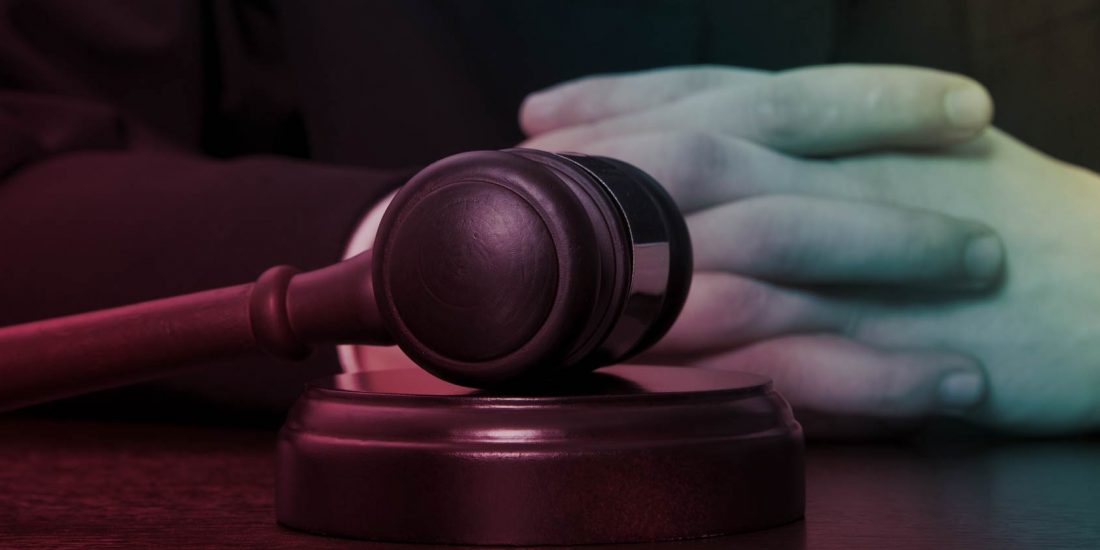
A Pause in the Expansion of Vicarious Liability?
An Analysis of Barclays Bank v Various Claimants [2020] UKSC 13
The doctrine of vicarious liability has undergone dramatic development in recent times and has been extended to scenarios quite different from that of employer-employee. The question is: will vicarious liability be applied to a situation where the tortfeasor is an independent contractor? The UKSC supplied the answer in Barclays Bank v Various Claimants. This article considers the implications of this landmark decision.
Introduction
Tort law is primarily fault-based – a defendant should be liable for his or her own actions but not those of others. Rigid adherence to this principle, however, can lead to unjust outcomes and leave innocent victims uncompensated. Hence, the law creates exceptions and imposes attributive liability through the concepts of vicarious liability, non-delegable duty or agency. This article focuses on vicarious liability.
A decade of UK Supreme Court (UKSC) cases, most notably the trilogy of Various Claimants v Catholic Child Welfare Society1(2012) UKSC 56. (Christian Brothers), Cox v Ministry of Justice,2(2016) UKSC 10. and Armes v Nottinghamshire County Council,3(2017) UKSC 60. have left observers marvelling at the remarkable expansion of the ambit of vicarious liability. They appear to indicate that where the employer4In this area of law, the term ‘employer’ has been used loosely to describe the defendant who engaged another to do something for him, even though that other cannot properly be described as an employee. Perhaps a more appropriate term to use is ‘principal’. and the tortfeasor are in a quasi-employee relationship or one akin to employment, liability may be found if it is fair, just and reasonable to do so.
Hence, a religious welfare organisation running a reformatory school was held liable for abuse inflicted by its members on the boys in its school, administrators of a prison service were held liable for the negligent act of a prisoner serving his work sentence in a prison kitchen and local authorities were held liable to child claimants for the abuse perpetrated by foster carers who were approved by the said authorities. In all these cases, the tortfeasors could not be said to be employees in the traditional sense and yet vicarious liability was imposed.
When Barclays Bank v Various Claimants (Barclays Bank) reached the UKSC, there was great anticipation as observers wondered if vicarious liability would be extended even further, to situations where the tortfeasor is an independent contractor. This article examines the Barclays Bank decision and its implications.
Facts and Decision
This case involved 126 claimants who were assaulted by a doctor engaged by the appellant bank to conduct pre-employment medical examination. It was not disputed that the doctor5The claimants did not pursue a case directly against the doctor and his estate as the claims of sexual assault were time-barred. was indeed an independent contractor. He was not a paid a retainer but rather was in business on his own account and had the option to refuse cases. He also had his own medical liability insurance. The main issue was whether the bank was vicariously liable for the acts of the doctor. In both the High Court and Court of Appeal, judgment was given in favour of the claimants, and on the ground of vicarious liability.
At the Court of Appeal, counsel for the claimant relied on the cases of Cox, Mohamud v WM Morrison Supermarkets Plc6(2016) UKSC 11. and Armes, arguing that a multi-factorial approach was necessary to determine whether a finding of vicarious liability is fair, just and reasonable. In accepting this argument, Lord Justice Irwin rejected the “bright line” argument and held that:
[T]he law now requires answers to the specified questions laid down in Cox and Mohamud and affirmed in Armes, rather than an answer to the question: was the alleged tortfeasor an independent contractor? No doubt when the answers to the Cox/Mohamud questions are such that vicarious liability cannot be established, the relationship may often be that of independent contractor. But that question of definition appears to me no longer to be the test. 7(2018) EWCA Civ 1670 at (44).
(Emphasis added)
Irwin LJ also placed significant emphasis on the dual considerations of risk creation and control. For the former, the learned judge affirmed the High Court finding that the bank had created the risk of the tort by placing the claimants in a vulnerable position. As regards control, although the examinations were not conducted within the bank, the fact remained that the bank exercised control as they were directional in deciding how the examinations were to be carried out. Discussing the close connection test, Irwin LJ noted that the medical examinations were closely linked to the relationship between the bank and the doctor. Additionally, these examinations brought benefit to the bank since they “opened the door to employment”.8At (51).
As to whether the outcome is fair, just and reasonable, his honour had no difficulty in finding9At (60). that imposing liability would indeed be ‘just and fair’.
Supreme Court’s Decision and Reasoning
On appeal, the UKSC rejected the lower courts’ contention that recent UKSC decisions indicated such a widening of the ambit of vicarious liability. Delivering the single judgment of the court, Lady Hale declared:10(2020) UKSC 13 at (24).
There is nothing in the trilogy of Supreme Court cases… to suggest that the classic distinction between employment and relationships akin or analogous to employment, on the one hand, and the relationship with an independent contractor, on the other, has been eroded.
(Emphasis added)
She noted that in two very recent cases before the common law courts – Kafagi v JBW Group Ltd11(2018) EWCA Civ 1157. (a UK Court of Appeal decision) and Ng Huat Seng v Mohammad12(2017) SGCA 58. (a Singapore apex court decision) – a similar conclusion was reached. As regards the latter decision, her ladyship cited approvingly,13(2020) UKSC 13 at (26). the following words of Menon CJ:
Indeed, we do not see how vicarious liability, the normative foundation of which rests on the theory that it is fair, just and reasonable to hold a defendant liable for the acts of the tortfeasor on the ground that the tortfeasor is in fact engaged in the defendant’s enterprise, could possibly be extended to tortious acts committed by an independent contractor, who, by definition, is engaged in his own enterprise. There is simply nothing fair, just and reasonable about imposing secondary liability on the defendant in such a situation. (Emphasis added)
Lady Hale emphasised:14At (27).
The question therefore is, as it has always been, whether the tortfeasor is carrying on business on his own account or whether he is in a relationship akin to employment with the defendant.
(Emphasis added)
She elaborated that, in doubtful cases, Lord Phillips’ five factors15As reproduced in the text to fn 18. in Christian Brothers may be helpful in identifying whether the relationship is analogous to employment. She concluded categorically:16At (27).
Where it is clear that the tortfeasor is carrying on his own independent business, it is not necessary to consider the five incidents.
Thus, identifying whether the tortfeasor is an employee (or a quasi-employee) precedes other considerations, and a negative finding precludes any further enquiry as to the possibility of vicarious liability.
Applying this legal framework to the case at hand, since it was a finding of fact that the doctor was indeed an independent contractor and the relationship between the bank and the doctor was not akin to employment, there cannot be vicarious liability on the part of the bank.
Comments
The decision of the UKSC is surprising for several reasons.
In the first place, one is puzzled that, in overruling the decisions of both lower courts on this critical and contentious issue of whether there can be vicarious liability for the tortious act of an independent contractor, the UKSC chose to issue a short 30-paragraph solo judgment.
Second, little attention was paid to the pertinent considerations of policy and principle which guided the lower courts. After all, the High Court17(2017) EWHC 1929 (QB) at (45). and the Court of Appeal18(2018) EWCA Civ 1670 at (49)-(58). had but applied Lord Phillips’ five factors in Christian Brothers, namely:
- the employer is more likely to have the means to compensate the victim than the employee and can be expected to have insured against that liability;
- the tort will have been committed as a result of activity being taken by the employee on behalf of the employer;
- the employee’s activity is likely to be part of the business activity of the employer;
- the employer, by employing the employee to carry on the activity will have created the risk of the tort committed by the employee; and
- the employee will, to a greater or lesser degree, have been under the control of the employer;
and concluded that, in the circumstances, it would be fair, just and reasonable to impose vicarious liability.
Lady Hale, however, was unimpressed by these considerations as she cited,19At (16). approvingly, the following passage of Lord Hobhouse:
… an exposition of the policy reasons for a rule… is not the same as defining the criteria for its application. Legal rules have to have a greater degree of clarity and definition than is provided by simply explaining the reasons for the existence of the rule or the social need for it, instructive though that may be. (Emphasis added)
She continued with her deprecating observation20At (16). of the “tendency to elide policy reasons for the doctrine … with the principles which should guide [its] development”.
In the writers’ view, the surprising dismissal and lack of consideration of whether the outcome is fair, just and reasonable understates the challenges encountered in situations of attributive liability and dismiss the policy concerns and the overarching objectives of tort law. The following words of Chan Sek Keong CJ in Skandinaviska v Asia Pacific Breweries bear repeating here:
… we are of the view that an innocent victim of an employee’s tort should, under ordinary circumstances, be compensated. In this regard, the employer is usually the person best placed and most able to provide effective compensation to the victim.21(2011) SGCA 22 at (77).
(In his judgment, Chan CJ also referred to the importance of deterrence of future harm by encouraging the employer to take steps to reduce the risk of similar harm.)
Considering that victim compensation, ability to pay22As Lord Reed pointed out in Cox (at (20)), although having deep pockets is not itself a sufficient reason to impose liability, the absence of any other source of compensation may sometimes be taken into account. In this case, the innocent claimants had no other legal recourse as their claims against the late doctor’s estate were largely time-barred. and deterrence of future harm are important constituents in the attributive liability equation, one is amazed by the lack of attention paid to them by the UKSC in Barclays Bank. The case for imposing liability is even stronger as one adds the arguments of risk creation, vulnerability23The claimants were given no choice as to the doctor to be seen for their medical examinations and the bank made the arrangements for these examinations, directing them where to go and when. and benefit from activity.
Hence, while the strict adherence to legal rules in the manner exercised by Lady Hale may provide certainty and clarity in this controversial area, it risks neglecting the important policy concerns and the key objectives of tort law.
Sexual Assault Scenarios
This case marks the most recent development in a long string of notable sexual assault scenarios, starting with Lister v Hesley Hall24(2001) UKHL 22. and continuing with the Christian Brothers case, Armes and BXB v Watch Tower Bible and Tract Society of Pennsylvania25(2020) EWHC 156. amongst others. Whilst Lister and Armes involved children homes, Christian Brothers and BXB involved religious leaders. In all of the aforementioned cases, the courts found vicarious liability, unlike in the present case.
As one compares the Barclays Bank scenario with these cases, distinctions can be found, for in the latter, the factors of risk creation and level of control were more accentuated given the hierarchical nature of religious organisations and the enclosed nature of residential and foster homes. However, the similarities are difficult to ignore. All the scenarios involve innocent victims with little or no control over their exposure to the risk of sexual assault by the tortfeasors, who were placed in positions of power and authority over the vulnerable claimants, whether in the form of revered religious elders (as in BXB) or a highly-respected and reputable doctor (as in Barclays Bank).
Further, as emphasised in BXB, the site of the assault is of little significance as long as the tortfeasor was ostensibly performing his duties.26BXB, at (86) (quoting Globe J in A v Trustees of the Watchtower Bible and Tract Society at (90)). So whilst the bank may not have exercised direct control in the same fashion as some of the defendants in the other cases, such as the foster homes, they did confer a significant level of authority to the doctor by requiring the claimants to obtain their medical examination from him.
In summary, the balancing of the factual differences and similarities between the Barclays Bank scenario and the sexual assaults cases preceding it also suggest that the outcome should be similar.
Key Propositions from the Decision
The UKSC in Barclays Bank has drawn a clear line separating employees and quasi-employees from independent contractors, declaring and confirming that vicarious liability will not be applied to tortious acts of the latter.
In deciding whether the tortfeasor is an independent contractor, the litmus test is whether he was “carrying on business on his own account”. So long as he was carrying on an independent business, the vicarious liability enquiry ends, and it is not necessary or permissible to pursue the matter further, such as by considering Lord Phillips’ five factors. This is a notable elevation of the independent business test from being simply one of the factors of consideration in the enquiry to being the determinative condition in finding vicarious liability.
Attributive Liability After Barclays Bank
It may be wondered if Barclays Bank has fully shut the door to the possibility of vicarious liability for an independent contractor’s tort. Specifically, what about cases where the independent contractor was performing an integral function of the employer? It cannot seriously be suggested that pre-employment medical examination is an integral part of the business of the bank. So, possibly, this question remains unanswered, the UKSC decision notwithstanding. One is also left in doubt as to the weight to be given to policy considerations in such instances of potential vicarious liability, given the complete silence on this matter in Lady Hale’s judgment.
As for other means of attributive liability such as non-delegable duty and agency, not much was said in the judgment. There was only passing reference to Woodland v Swimming Teachers Association;27(2013) UKSC 66. theoretically, it is possible to argue that the bank had a non-delegable duty to its employees to protect them from such instances of assault. No mention was made of agency.
Another avenue of liability is the primary duty of supervision. However, given the rather inexplicable dearth of case law on the duty of supervision, it remains highly uncertain whether a particular claimant would succeed on this ground.
The law of vicarious liability, Lord Phillips remarked in Christian Brothers,28(2012) UKSC 56 at (19). is “on the move”, and what a remarkable journey it has been so far. The Court of Appeal in Barclays Bank sought to take it even further and extend it to tortious acts of an independent contractor. It remains to be seen how far the expansion would proceed in other jurisdictions. As for UK law, the apex court appears to have said: “Thus far and no further”.
Endnotes
| ↑1 | (2012) UKSC 56. |
|---|---|
| ↑2 | (2016) UKSC 10. |
| ↑3 | (2017) UKSC 60. |
| ↑4 | In this area of law, the term ‘employer’ has been used loosely to describe the defendant who engaged another to do something for him, even though that other cannot properly be described as an employee. Perhaps a more appropriate term to use is ‘principal’. |
| ↑5 | The claimants did not pursue a case directly against the doctor and his estate as the claims of sexual assault were time-barred. |
| ↑6 | (2016) UKSC 11. |
| ↑7 | (2018) EWCA Civ 1670 at (44). |
| ↑8 | At (51). |
| ↑9 | At (60). |
| ↑10 | (2020) UKSC 13 at (24). |
| ↑11 | (2018) EWCA Civ 1157. |
| ↑12 | (2017) SGCA 58. |
| ↑13 | (2020) UKSC 13 at (26). |
| ↑14 | At (27). |
| ↑15 | As reproduced in the text to fn 18. |
| ↑16 | At (27). |
| ↑17 | (2017) EWHC 1929 (QB) at (45). |
| ↑18 | (2018) EWCA Civ 1670 at (49)-(58). |
| ↑19 | At (16). |
| ↑20 | At (16). |
| ↑21 | (2011) SGCA 22 at (77). |
| ↑22 | As Lord Reed pointed out in Cox (at (20)), although having deep pockets is not itself a sufficient reason to impose liability, the absence of any other source of compensation may sometimes be taken into account. In this case, the innocent claimants had no other legal recourse as their claims against the late doctor’s estate were largely time-barred. |
| ↑23 | The claimants were given no choice as to the doctor to be seen for their medical examinations and the bank made the arrangements for these examinations, directing them where to go and when. |
| ↑24 | (2001) UKHL 22. |
| ↑25 | (2020) EWHC 156. |
| ↑26 | BXB, at (86) (quoting Globe J in A v Trustees of the Watchtower Bible and Tract Society at (90)). |
| ↑27 | (2013) UKSC 66. |
| ↑28 | (2012) UKSC 56 at (19). |






